A guide to aquascaping the planted aquarium (original) (raw)
![]()
A GUIDE TO ADVANCED AQUASCAPING
Aquascaping is a learned art form that allows you to create an underwater landscape, inspiration for many works come from both underwater locations but also natural scenes such as mountains, jungles, deserts, waterfalls and many others.
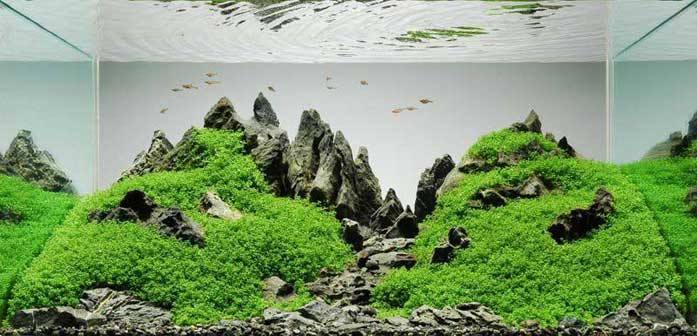
Designing an aquascape can be challenging. Aquascaping involves using basic principles of design and applying them to the aquarium. Browsing other aquascapes can help you decide what style and layout you enjoy the most. To aid in your designing process this page is filled with some stunning examples of aquascaping.
To know Mother Nature, is to love her smallest creations
Takashi Amano
Before we jump in and explore aquascaping there needs to be a functioning aquarium environment. Aquascaping setups can differ significantly from standard tropical setups. This is because some aquatic plants require higher lighting and nutrient rich substrates to thrive. Each link below walks through an important parameter to consider when setting up your aquascape. Low maintenance aquascapes have since become popular in the hobby. These utilize minimal CO2, less fertilizer supplementation and low wattage lighting. Lower lighting setups can be just as stunning but are limited to a smaller variety of plants. These usually include ferns, moss, crypts and anubias.
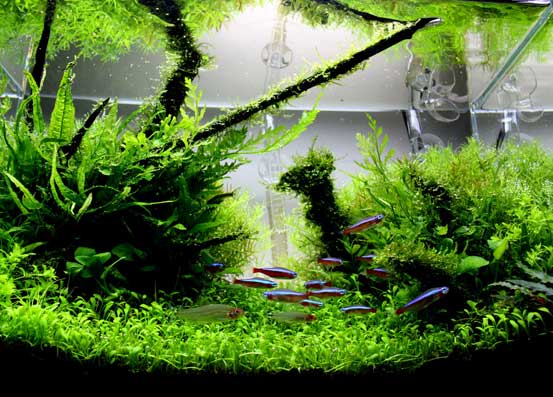
Click on these links for more Information
The Process
Assuming you have put your substrate in, connected up your CO2 and turned your lights on you are almost ready to go. So, design. I cannot give you your design but i can give you some pointers that will help the design process. 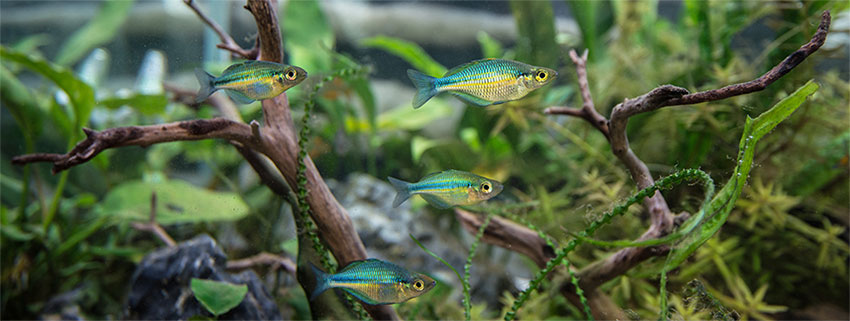
Ok so now it’s time to aquascape. Before we start it’s important to remember that the biggest factor in Aquascaping is imagination. The internet can only tell you so much but with your sense of view and imagination it is not hard to create something truly inspiring. Nothing is concrete, if you design something, create it and dislike it, take it down! Destroy and rebuild it as many times as you want until you are impressed.

Things to Avoid
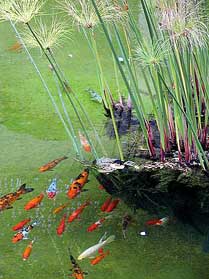
- Becoming frustrated – yes the tanks on the internet are beautiful but not impossible; they have nothing that you don’t have so go for it!
- Using one type of plant – it may give a theme to the tank but can become boring – mix it up!
- Using only large leaf plants, larger plants will make your aquascape look smaller and not as deep, the finer the leaves, the larger your scape!
- Keep it simple stupid – yes it’s great to have the entire tank full of every type of plant that’s ever existed, but this doesn’t look good! Be sure to have as much open space as filled space, infact tanks with lots of open areas look great, fill them with a school of fish.

First of all let’s look at Symmetry

The Next Factor is Shape

Foreground Middleground and Background
- It is important to keep a clear distinguished line between the three
- Having a low foreground then straight to a high background may give you more open space but looks terrible
- Putting rocks and wood in the middle ground looks very nice, the background stems will complement them and the low foreground plants look like grass at the bottom of a mountain range or forest.
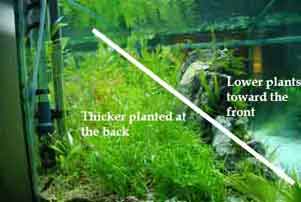
- Wood that sticks out right to the surface can look so very amazing. This with moss on it can create another dimension within the tank and enhance the depth.

Creating a Mountain Styled Scape
- It is important to have lots of open space aswell as scaped space
- Do not have the mountain in the EXACT centre of the tank, as stated above you want it to be slightly to the left or right.
- Although you may feel like it would look better, try not to push your mountain into the corner, this will create more of a sloped tank and will not give you the defined lines of a mountain shape.
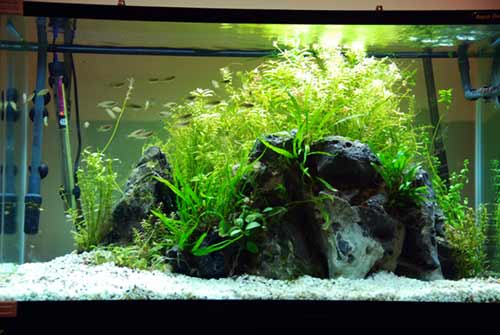
- Use no or very low foreground plants, for the 'cliff' face of the mountain you do not want an 'intermission' plant. For the first third of the mountain you want the slope to be almost vertical to make sure you get the steep structure.
- The rocks you place in will need to be covered in some sort of plant and possibly dug into the gravel a bit to provide a more natural setting
- Only use one type of rock! and use 'sharp' edged rocks for that peak look
- You may use the substrate to provide a higher base for the mountain
- Make sure the edges of the mountain slope down toward the edge of the tank and are not flat, otherwise it looks like a rock formation and not the slope of a mountain.'

Planting the Tank

Plant Colorations and Sizes
- Red and orange plants give a nice touch to the aquascape
- Be careful not to put in one single red plant such as a tiger lotus, this mistake will draw attention away from your central focus and cause uneasiness within the viewer as their eyes dart between both points of focus.
- Different shades of green also provide a wider variety and make the tank look more natural and less structured.
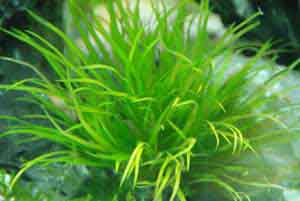
- The size of the leaves will change the look of the tank, large leaves will make the tank look smaller but smaller leaves will make the tank look much bigger than what it actually is.
- Be careful not to clump all of each plant type together, this looks more like a store than an aquarium.

Recommended Fish
- Certainly the best types of fish are small and usually schooling
- Good examples of these are Australian rainbow fish, such as threadfin’s, praecox and other dwarf varieties.
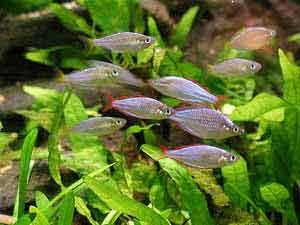
- They have avid swimming habits, breed regularly. Around 50-100 in a larger aquarium will make the tank come to life
- Other good choices are tetras because they are small and will often school
- The most popular in aquascape’s are ember tetras due to their small size but bright colouration, neon tetra’s are great but maybe try something unusual, everyone has seen neon’s before, but people will be astounded by something different
- Choosing smaller fish is recommended as it will cause the tank to seem much bigger than what it really is, this should be complemented by the use of small plants. E.g. the first picture on this page, that tank is little over a foot long, but it could easily be percieved to be at least 3ft in length.
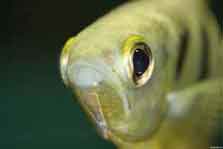
- Colourful fish are recommended but not essential, with lots of plants the fish are not the predominant feature and there colours will not show as well, but they are nice to have and will combine to create a peaceful retreat. Please leave your comments and added suggestions below!